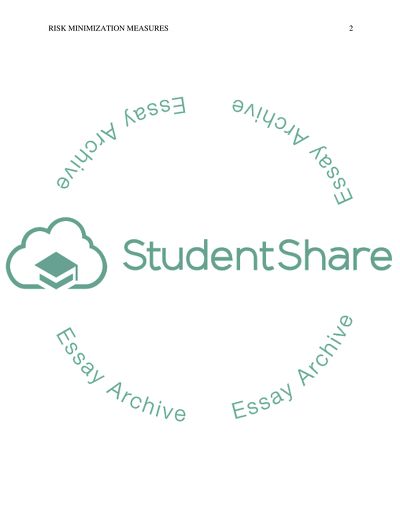Cite this document
(Risk Minimization Measures Essay Example | Topics and Well Written Essays - 1500 words, n.d.)
Risk Minimization Measures Essay Example | Topics and Well Written Essays - 1500 words. https://studentshare.org/health-sciences-medicine/1821488-measuring-the-effectiveness-of-additional-risk-minimisation-activities-in-drug-safety
Risk Minimization Measures Essay Example | Topics and Well Written Essays - 1500 words. https://studentshare.org/health-sciences-medicine/1821488-measuring-the-effectiveness-of-additional-risk-minimisation-activities-in-drug-safety
(Risk Minimization Measures Essay Example | Topics and Well Written Essays - 1500 Words)
Risk Minimization Measures Essay Example | Topics and Well Written Essays - 1500 Words. https://studentshare.org/health-sciences-medicine/1821488-measuring-the-effectiveness-of-additional-risk-minimisation-activities-in-drug-safety.
Risk Minimization Measures Essay Example | Topics and Well Written Essays - 1500 Words. https://studentshare.org/health-sciences-medicine/1821488-measuring-the-effectiveness-of-additional-risk-minimisation-activities-in-drug-safety.
“Risk Minimization Measures Essay Example | Topics and Well Written Essays - 1500 Words”. https://studentshare.org/health-sciences-medicine/1821488-measuring-the-effectiveness-of-additional-risk-minimisation-activities-in-drug-safety.


